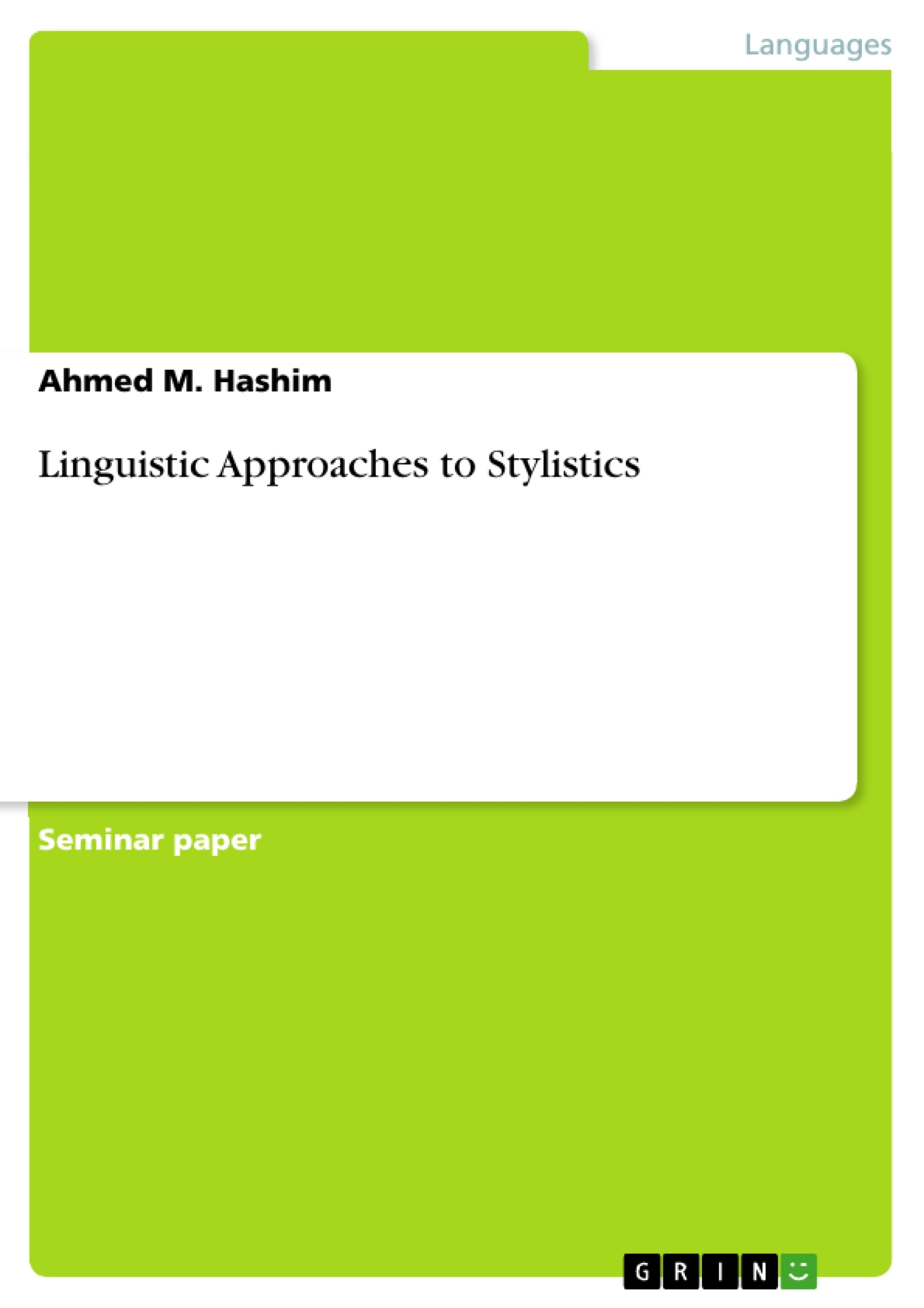This paper talks about the linguistic approaches to stylistics as the study of style. Stylistics, as a branch of linguistics, is mainly concerned with style. It defines, investigates, and analyzes it objectively and technically through employing linguistic methodology. Linguistics offers stylistic analysis of texts at phonological, syntactic, and semantic levels of linguistic description.
Table of Contents
- Linguistic Approaches to Stylistics
- Stylistics as a Branch of Linguistics
- Linguistic Description and Analysis of Texts
- Style and Stylistics: Definition and Role
- Stylistics and Literary Criticism
- Linguistics and Literary Criticism
- Stylistics as a Linguistic Field
- The History of Stylistics
- Approaches to Stylistics
- Stylostatistics
Objectives and Key Themes
This text aims to provide a comprehensive overview of stylistics, its theoretical foundations, and its application in analyzing literary texts. It explores the intersection of stylistics with linguistics and literary criticism, tracing the historical development of the field and examining different approaches to stylistic analysis.
- The relationship between stylistics and linguistics.
- The historical development and theoretical foundations of stylistics.
- Different approaches to stylistic analysis, including textualist and contextualist perspectives.
- The role of stylistics in interpreting and understanding literary texts.
- The interdisciplinary nature of stylistics and its connections to other fields, such as rhetoric and literary criticism.
Chapter Summaries
- Linguistic Approaches to Stylistics: This chapter introduces stylistics as a branch of linguistics concerned with analyzing the style of language. It discusses how stylistics employs linguistic methodology to objectively and technically examine stylistic features in texts.
- Stylistics as a Branch of Linguistics: This chapter explores the traditional appreciation of literature and contrasts it with the more technical approach of stylistics. It highlights how stylistics relies on linguistic tools and methods to understand and analyze style.
- Linguistic Description and Analysis of Texts: This chapter delves into the linguistic levels at which stylistics analyzes texts, focusing on phonological, syntactic, and semantic levels. It emphasizes the use of meta-language and terminology in stylistic analysis.
- Style and Stylistics: Definition and Role: This chapter presents various definitions of style and stylistics, focusing on the role of stylistic features in conveying meaning and shaping reader interpretation. It explores the encoding and decoding processes in communication and how they influence style.
- Stylistics and Literary Criticism: This chapter examines the relationship between stylistics and literary criticism, highlighting the different perspectives and approaches of these two fields. It discusses how stylistics can serve as a bridge between linguistics and literary analysis.
- Linguistics and Literary Criticism: This chapter explores the interconnectedness of linguistics and literary criticism. It argues that linguistic analysis is essential for understanding literary texts and that literary criticism cannot be separated from the study of language.
- Stylistics as a Linguistic Field: This chapter provides a broader perspective on stylistics, defining it as a linguistic discipline dedicated to studying the stylistic variations in language and how they are employed by users.
- The History of Stylistics: This chapter traces the historical development of stylistics, exploring its roots in rhetoric and its evolution in the context of modern literary criticism. It discusses the influence of New Criticism and Russian Formalism.
- Approaches to Stylistics: This chapter examines different approaches to stylistic analysis, focusing on the distinction between textualist and contextualist perspectives. It highlights the contributions of prominent stylisticians and their methodologies.
Keywords
The key terms and concepts explored in this work include stylistics, linguistics, literary criticism, stylistic variation, textual analysis, contextual analysis, rhetoric, New Criticism, Russian Formalism, and stylostatistics. The text examines how these concepts intersect and inform our understanding of language and literature.
- Quote paper
- Ahmed M. Hashim (Author), 2017, Linguistic Approaches to Stylistics, Munich, GRIN Verlag, https://www.grin.com/document/378466




